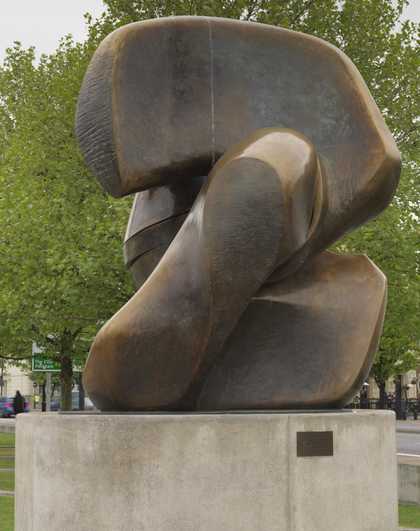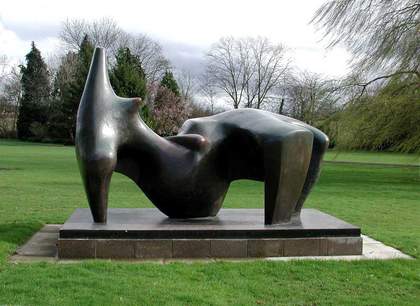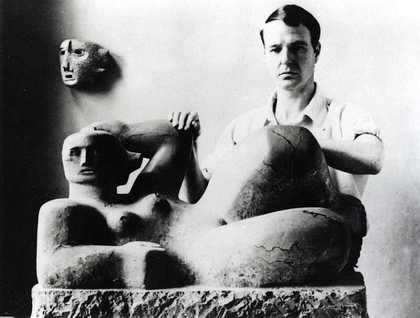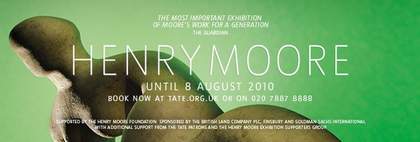
Henry Moore OM, CH
Locking Piece (1963–4, cast c.1964–7)
Tate
Henry Moore OM, CH (1898–1986) achieved levels of success and recognition in the post-war years that arguably exceeded that of any other twentieth-century British artist. Through public commissions and regular exhibitions at home and abroad Moore’s work seemed omnipresent to succeeding generations. Perhaps inevitably, Moore’s public visibility was a double-edged sword: although broadly popular, his sculpture came to exemplify for some a middle-of-the-road modernism that hardly seemed modern at all.
Whether despite or because of his status as an elder statesman of modern British art, Moore remained mostly exempt from critical reappraisal in the decades following his death. Although recent critical assessments have begun to uncover Moore’s roots in particular aesthetic, social and historical contexts, much of this scholarship has focused on work created during the first four decades of Moore’s career (1920s–1950s). Building on the developing momentum of Moore studies, Henry Moore: Sculptural Process and Public Identity aimed to expand understanding of Henry Moore’s artistic ideas and working processes throughout his career, and to assess his impact on visual culture across the twentieth century.
Using Tate’s artworks and archives as a starting point, the research project explored two main themes. The first concerned Moore’s techniques and materials. Narratives of Moore as a modern sculptor have been dominated by his stone and wood carvings and framed by his statements made in the 1930s about direct carving and the associated principle of truth to materials. However, the prioritisation of these early practices has meant that his later use of other materials and other techniques has been relatively overlooked. What does a study of Moore’s methods tell us about twentieth-century modernism? How did Moore’s adoption of bronze affect the formal qualities of his work? Should Moore’s plaster and bronze works be understood in terms used to assess his carved works, or should new modes of assessment be established? During the 1970s the artist used increasingly Styrofoam and fibreglass; the project also addressed the extent to which Moore’s canonical status has detracted attention from such artistic innovations.
The second theme explored the reception of Moore’s work and his public identity. The project assessed how Moore’s public image was constructed within printed and broadcast media, and in photography, newsreels and film. During the last two decades of his life Moore was regarded as the elder statesman of not only British art, but international modernism. How did he achieve this status, and how did he respond to his classification as both an English and global artist? How did Moore manage and sustain relationships with key supporters and to what extent did they guarantee his place in art history? What role was played by dissenting critics who challenged the dominant projections of Moore and positive assessments of his work?
Project outcomes
Launched in September 2010 and completed in September 2015, the project lead to the recataloguing of Moore’s sculptures in Tate’s collection and the creation of a research website. The site features a range of commissioned essays by leading scholars in the field and a range of scholarly resources, including images of items in Tate’s Archive. There were also a series of workshops and conferences. In April 2013 Henry Moore: Sculptural Process and Public Identity hosted a session at the 39th Annual Association of Art Historians Conference. New gallery displays at Tate Britain also drew on scholarship generated by the project.




